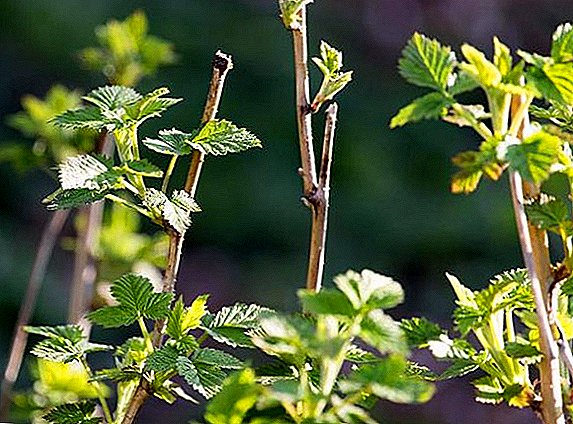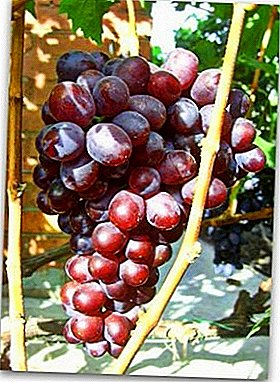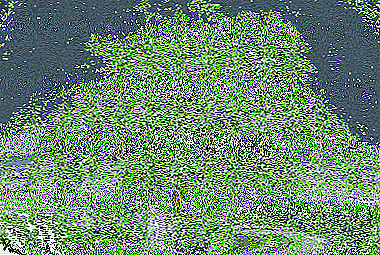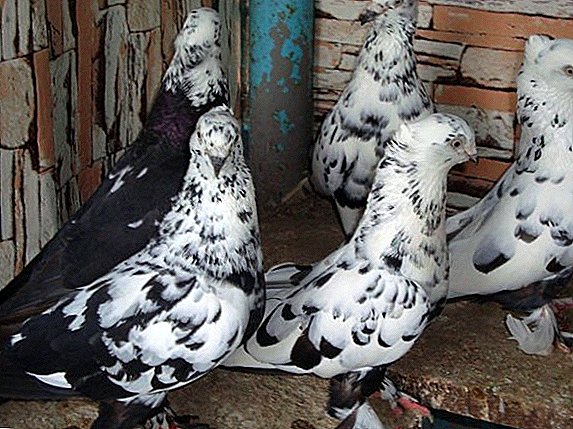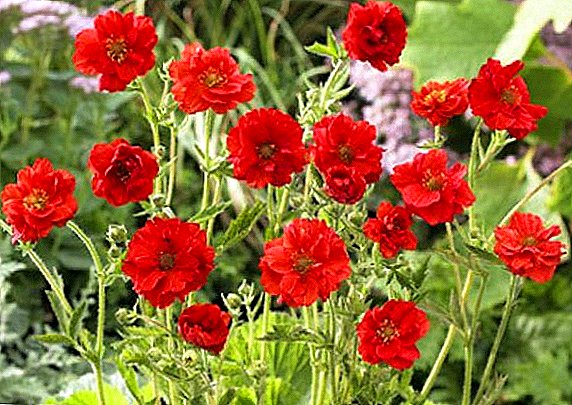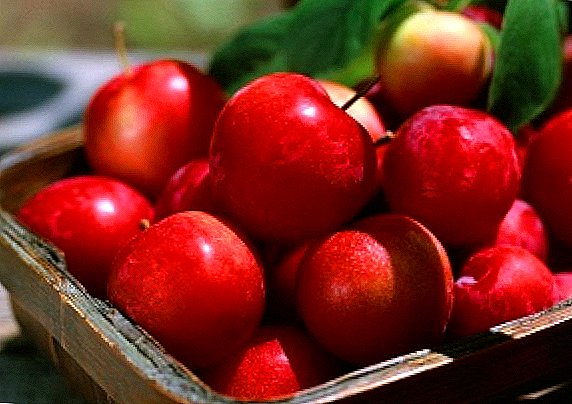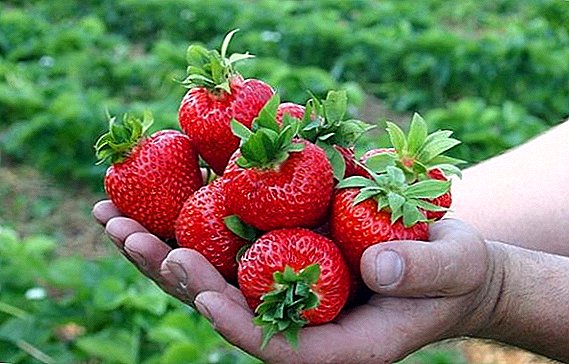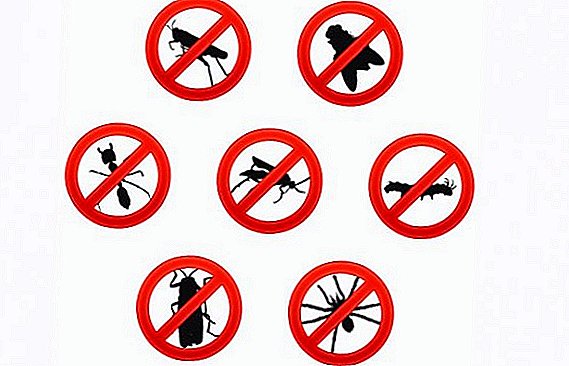 Before a gardener or summer resident gathers his crop, he will have to face some unpleasant moments, one of which is harmful insects that also want to feast on succulent plants and a tasty harvest. To protect your crop from various pests, their eggs and larvae can be with the help of insecticides - these are special chemicals that have a destructive effect on harmful insects and their offspring. Toxic substances that are part of insecticides, detrimental effect on the population of certain pests, depending on the main active ingredient.
Before a gardener or summer resident gathers his crop, he will have to face some unpleasant moments, one of which is harmful insects that also want to feast on succulent plants and a tasty harvest. To protect your crop from various pests, their eggs and larvae can be with the help of insecticides - these are special chemicals that have a destructive effect on harmful insects and their offspring. Toxic substances that are part of insecticides, detrimental effect on the population of certain pests, depending on the main active ingredient.
Did you know? Natural insecticides began to be used by ancient people during the founding of agriculture.To destroy weeds used herbicides - Chemicals that penetrate through the leaf plates and roots, burning it from the inside.
Insecticidal preparations are detailed and carefully classified depending on the chemical composition, on the method of penetration into the organism of the insect, on the spectrum of influence and on its immediate purpose. Let us examine in more detail what an insecticide is for each of these species and against which insects they are effective.
Types of insecticides by chemical composition
 Chemical insecticides are produced by the synthesis of organic substances, they are toxic, have a poisonous effect on insects, penetrating through the cuticle covers, as well as through the digestive system when the pest is fed by plants treated with insecticides. The most popular types of chemical compounds are organochlorine, organophosphate and pyrethroids. Let us dwell on each type in more detail.
Chemical insecticides are produced by the synthesis of organic substances, they are toxic, have a poisonous effect on insects, penetrating through the cuticle covers, as well as through the digestive system when the pest is fed by plants treated with insecticides. The most popular types of chemical compounds are organochlorine, organophosphate and pyrethroids. Let us dwell on each type in more detail.
Organochlorine
Organochlorine compounds (HOS) are obtained by chlorination of liquid hydrocarbons. Preparations allow to fight with many pests: grains, vegetables and industrial crops, as well as pests of trees and shrubs. Form release - powders and oil emulsions, the most common types - DDT, HCBD, DDD, HCCH, heptachlor, PCP, PCC and aldrin. HOS poorly soluble in water, soluble in fats and oils, their level of chemical resistance is high. HOS, penetrating into the body of the pest, affects the nervous system, damages it, causes paralysis. Insect death occurs within 7 days.
 Organochlorine insecticides have a high degree of destruction of most types of pests, but have a significant drawback - they are too toxic, harming both humans and the environment. Now this type of insecticides is sought to be replaced with safer preparations, thereby displacing it from the gardeners' arsenal.
Organochlorine insecticides have a high degree of destruction of most types of pests, but have a significant drawback - they are too toxic, harming both humans and the environment. Now this type of insecticides is sought to be replaced with safer preparations, thereby displacing it from the gardeners' arsenal.
Organophosphate
Organophosphorus compounds (FOS) are phosphoric acid esters, which are characterized by selective effects on insects. The most popular organophosphate insecticide preparations are Fufanon, Dichlorvos, Karbofos, Fozalon. The advantages of FOS are their effectiveness in the destruction of many pests, including ticks, fast action, low consumption, drugs often have a systemic effect, do not accumulate in the human or animal body in case of accidental exposure. As a drawback, it is possible to highlight the high toxicity of drugs for humans and animals, when working with FOS, strict adherence to safety rules is necessary, as well as the emergence of resistant generations of pests with regular use for a long time.
Important! To treat insecticidal preparations need affected pest plants, as well as those areas in which the probability of its occurrence.
Pyrethroids
 Pyrethroids are highly effective derivatives of the natural substance pyrethrum, its action is aimed at damaging the nervous system of pests and disrupting the passage of nerve impulses. The most popular pyrethroids are "Fastak", "Decis", "Fas", "Arrivo", "Cotrin". The advantages include: selective toxicity that does not affect warm-blooded, including human, the possibility of using at low ambient temperatures and prolonged retention of the drug on plants. Disadvantages of pyrethroids - do not destroy the pests hidden in secluded places, and prolonged use will cause resistance to the drug in insects.
Pyrethroids are highly effective derivatives of the natural substance pyrethrum, its action is aimed at damaging the nervous system of pests and disrupting the passage of nerve impulses. The most popular pyrethroids are "Fastak", "Decis", "Fas", "Arrivo", "Cotrin". The advantages include: selective toxicity that does not affect warm-blooded, including human, the possibility of using at low ambient temperatures and prolonged retention of the drug on plants. Disadvantages of pyrethroids - do not destroy the pests hidden in secluded places, and prolonged use will cause resistance to the drug in insects.
Important! Work with any insecticide should be carried out in a gauze bandage, gloves and work coat.
How to divide insecticides by the method of penetration into the body
By way of penetration into the body of a pest insecticides are divided into intestinal, contact and systemic. However, some drugs are able to combine the path of penetration to get rid of insects.
Contact
 Contact insecticides are able to penetrate into the body of an insect when the body of the pest is in external contact with a plant, the surface of which contains a poisoning drug. Contact preparations are effective for a week, precipitates wash off the active substance, and its action may cease faster. The advantage is the rapid killing effect after spraying the pest-affected plant. Disadvantages of this type of drugs: no impact on the larvae that exist in the buds and buds, and not treated parts of plants are absolutely not protected from insects, therefore, it is necessary to thoroughly spray all terrestrial vegetation. Popular drugs "Apollo", "Karate" and "Oberon".
Contact insecticides are able to penetrate into the body of an insect when the body of the pest is in external contact with a plant, the surface of which contains a poisoning drug. Contact preparations are effective for a week, precipitates wash off the active substance, and its action may cease faster. The advantage is the rapid killing effect after spraying the pest-affected plant. Disadvantages of this type of drugs: no impact on the larvae that exist in the buds and buds, and not treated parts of plants are absolutely not protected from insects, therefore, it is necessary to thoroughly spray all terrestrial vegetation. Popular drugs "Apollo", "Karate" and "Oberon".
Intestinal
Intestinal insecticides have a special characteristic: getting into the insect's digestive system, they infect it from the inside, causing rapid death. Effective against gnawing pests that eat treated plants. Among gardeners, contact-intestinal insecticides are popular - this is a product of the agrochemical industry of a combined action on an insect - through the skin when it comes in contact with a treated plant, and also poisoning it by eating pests of a plant that penetrates a toxic substance. The disadvantage is the dependence of the drug on the level of quality of treatment plants Often used in the fight against pests are contact-intestinal insecticides like Akarin, Bankol, Detsis, Konfidor and Calypso.
Systemic
 Insecticides of systemic action are characterized by the ability to quickly penetrate into the system of vessels of the treated plant and move along it to all ground parts. This type of insecticide infects insects, leading vital activity in plant tissues, as well as individuals that feed on the treated plant, destroying them. The main advantage of the drug - independent effectiveness of precipitation, since the toxic substance is stored in the plant at the cellular level, and not on the surface. The most popular systemic drugs are Biotlin, Mospilan and Prestige.
Insecticides of systemic action are characterized by the ability to quickly penetrate into the system of vessels of the treated plant and move along it to all ground parts. This type of insecticide infects insects, leading vital activity in plant tissues, as well as individuals that feed on the treated plant, destroying them. The main advantage of the drug - independent effectiveness of precipitation, since the toxic substance is stored in the plant at the cellular level, and not on the surface. The most popular systemic drugs are Biotlin, Mospilan and Prestige.
Did you know? A complete rejection of insecticides will reduce the yield to 20-35%, in contrast to the yield level of 95% with the use of drugs from pests.
Classification of insecticides by spectrum
According to the spectrum of action, insecticides are classified into preparations of selective and continuous exposure.
Solid action
Insecticides of continuous action are chemical means of combating several types of various pests. This type of drugs used for the effective simultaneous destruction of various insects.
Selective action
 Insecticides selective actions are used to combat a particular pest. This species includes anthelmintics - drugs that destroy parasitic worms, nematocides - destroy roundworms, acaricides, which destroy ticks, as well as insectoacaricides that are effective against ticks and other insects.
Insecticides selective actions are used to combat a particular pest. This species includes anthelmintics - drugs that destroy parasitic worms, nematocides - destroy roundworms, acaricides, which destroy ticks, as well as insectoacaricides that are effective against ticks and other insects.
Important! Insecticides are not recommended to be applied near an apiary or pets.
How to share drugs for production purposes
For the convenience of gardeners and agricultural workers, groups of drugs have been developed, separated by their production purpose - they differ in the chemical structure and the nature of the impact on the insect's body. The main types of industrial drugs are attractants, pheromones, insectoacaricides, ovicides, deficiencies and repellents.
Attractants and pheromones
Attractants and pheromones are drugs that attract pests with their scent into special traps. This type of insecticide allows the mass destruction of insects after their capture. Pheromones are a product of the synthesis of substances that attract individuals of the opposite sex. Attractants affect the food receptors of the insect, which in search of fragrant food falls into the trap. Gaseous attractants lure the specific smell of small flying insects.
Insectoacaricides
 Insecticoacaricides are chemical and biological substances designed to kill harmful insects and mites. An insecticoacaricide, when exposed to a pest, paralyzes it, after which the insect dies. A significant drawback - the accumulation of toxic substances in the human body has a negative effect on the central nervous system.
Insecticoacaricides are chemical and biological substances designed to kill harmful insects and mites. An insecticoacaricide, when exposed to a pest, paralyzes it, after which the insect dies. A significant drawback - the accumulation of toxic substances in the human body has a negative effect on the central nervous system.
Ovicides
Ovicides can have a detrimental effect on the eggs of various pests, which are one of the most stable stages in the development of the insect and mite. The poisonous components penetrate the shell of the egg and destroy the insect embryo. This type of insecticide is not lethal for other stages of pest development and life.
Aphistides
Atifs are chemical compounds that destroy aphid populations. This type of insecticide has an intestinal, contact and systemic effect on aphids and some other sucking pests. Aficides are poorly soluble in water, and in organic solvents - good.
Larvicides
Larvicides are drugs that have a detrimental effect on the larval stages of insect development, while the other stages are practically unaffected by its destructive effect. The larva or caterpillar of the pest, eating the plant, treated with larvicide, after a time dies from the toxic substances of the drug. The most susceptible to the action of this type of insecticide are pests in the early larval stage.
Repellents
 Repellents are agents that scare plant pests and prevent them from eating garden and garden crops. The repellent can be either a chemical compound or a specific plant, which, by its smell, will protect cultural plantings from harmful insects. It makes sense to use repellents for prophylactic purposes at the slightest probability of damage to plants by pests.
Repellents are agents that scare plant pests and prevent them from eating garden and garden crops. The repellent can be either a chemical compound or a specific plant, which, by its smell, will protect cultural plantings from harmful insects. It makes sense to use repellents for prophylactic purposes at the slightest probability of damage to plants by pests.
We familiarized ourselves with what insecticides are and what their classifications exist, which is very important and convenient when making the right choice of drugs for the destruction of various types of pests. Currently, broad-spectrum insecticides are presented in a large assortment in specialized stores. With their help, the garden or summer cottage generously endows you with a harvest without much effort and financial cost.


